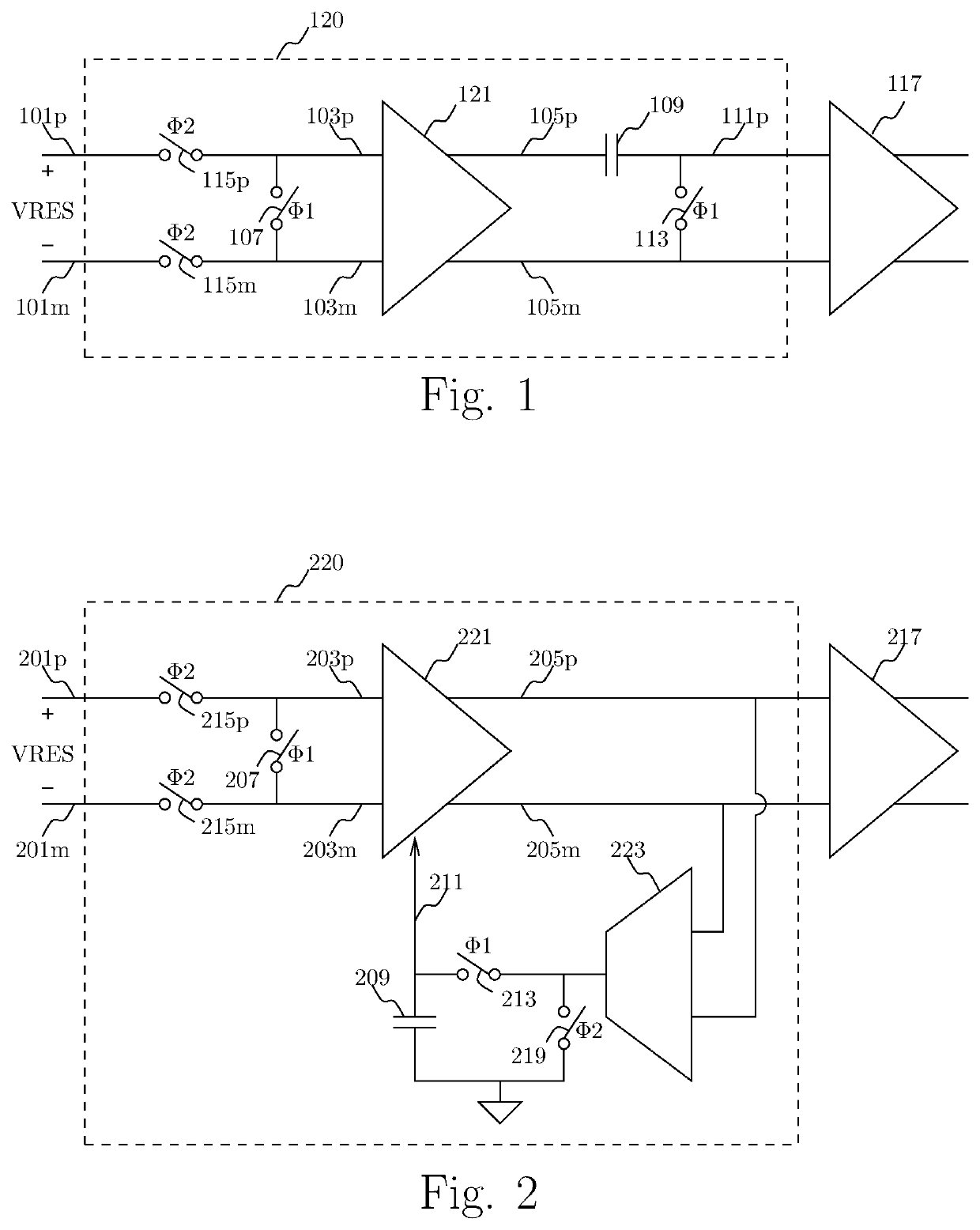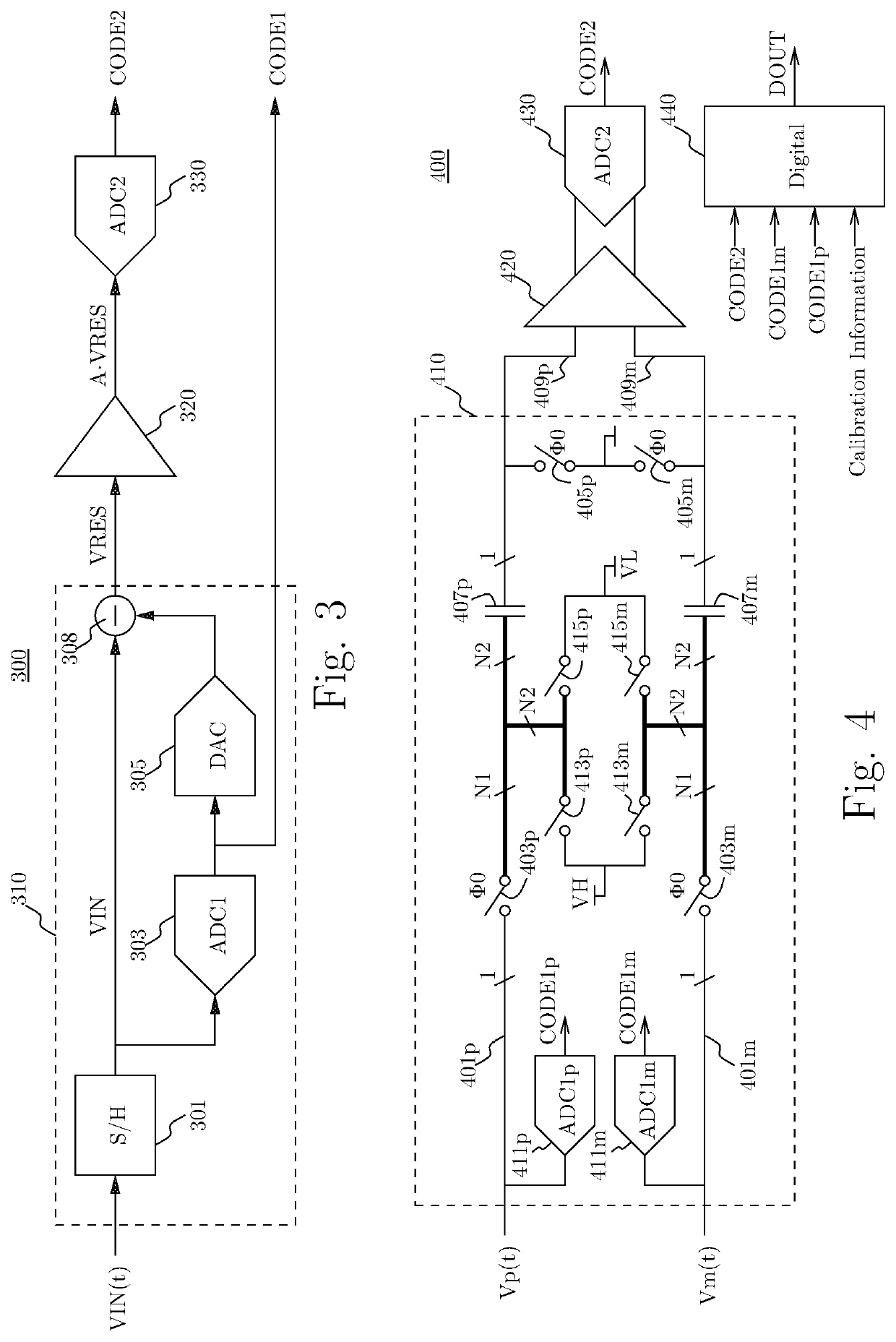Analog-to-digital converter with auto-zeroing residue amplification circuit
- Summary
- Abstract
- Description
- Claims
- Application Information
AI Technical Summary
Benefits of technology
Problems solved by technology
Method used
Image
Examples
example implementations
[0084]The following examples are provided by way of illustration.
[0085]Example 1 may include an analog-to-digital converter (ADC) circuit for receiving an analog input value and providing a digital output code to represent the analog input value, the ADC circuit comprising a sampling-quantizing-residue-generating (SQRG) circuit configured to receive the analog input value and to provide a first digital code derived at least in part from the analog input value; the SQRG circuit further configured to provide an analog residue value derived at least in part from the analog input value and the first code, an auto-zeroing residue amplification circuit configured to receive and amplify the analog residue value and to provide a first and a second observation of the amplified analog residue value, a quantizer circuit configured to derive a second code to represent a combination of at least the first and second observations of the amplified analog residue value, and a digital circuit configu...
PUM
 Login to View More
Login to View More Abstract
Description
Claims
Application Information
 Login to View More
Login to View More - R&D
- Intellectual Property
- Life Sciences
- Materials
- Tech Scout
- Unparalleled Data Quality
- Higher Quality Content
- 60% Fewer Hallucinations
Browse by: Latest US Patents, China's latest patents, Technical Efficacy Thesaurus, Application Domain, Technology Topic, Popular Technical Reports.
© 2025 PatSnap. All rights reserved.Legal|Privacy policy|Modern Slavery Act Transparency Statement|Sitemap|About US| Contact US: help@patsnap.com



